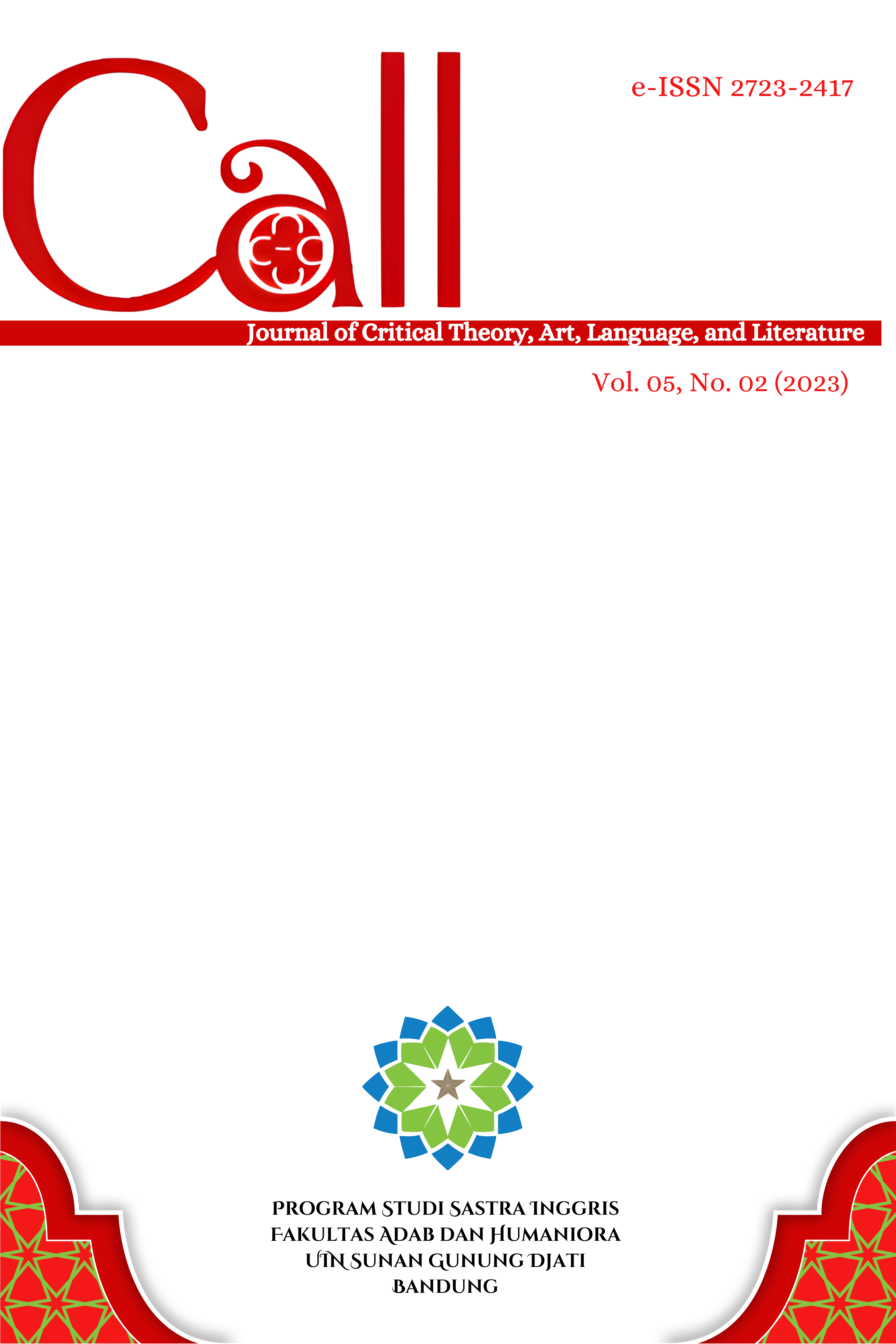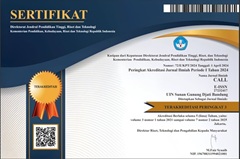PERSONIFICATION IN KALILA WA DIMNA AND METAPHOR IN 1001 NIGHTS WITHIN ABBASID ERA
DOI:
https://doi.org/10.15575/call.v5i2.27559Abstract
This study examined literary works of the Abbasid era, focusing on narratives from 1001 Nights and Kalila Wa Dimna. It tried to contribute to the understanding of Abbasid literature. Through textual analysis and library research, the study explored the cultural and social dimensions of the era. It used a descriptive qualitative method. The findings revealed there were frequent use of personifications and metaphoric existed in both literary works, which enhanced characterization and conveyed moral lessons. The narratives from 1001 Nights and Kalila Wa Dimna provide captivating stories that entertain readers and offer insights into human experiences and wisdom. In conclusion, there were limitations in the reliability of the narratives and the subjective nature of the evaluation.Â
Keywords: Abbasid era, 1001 Nights, Kalila Wa Dimna, personification, metaphor
References
Abdelsadak, N. (2014). Kalila & Dimna. January 2010.
al-Muqaffaʿ, I. (2022). The Turtle and the Monkey. In M. Fishbein (Ed.), Kalīlah and Dimnah: Fables of Virtue and Vice.
Alm-Arvius, C. (1942). Figures of speech. In Notes and Queries, 182(7).
Dewi, S. N., Al-Adawiyah, S. S., Tabroni, I., Mark, E., & Intes, A. (2023). Disintegration: dynamics and polemics of Umayyad and Abbasid leadership. International Journal of Educational Narratives, 1(6), 282–296.
Falconer, G. N. K H. (2016). Kalilah and dimna, the fables of bidpai. In Correspondencias & Análisis. CAMBRIDGE: CAMBRIDGE UNIVERSIT PRESS WAREHOUSE.
Kennedy, X. J. (1991). Literature: an introduction to fiction, poetry, and drama. 5th Edition. New York: Harper Collins College.
Keraf, G. (2001). Diksi dan gaya bahasa. Jakarta: Gramedia Pustaka Utama.
Koohshahee, R. R., & Anushirvani, A. (2015). Thousand and one nights and Ali Baba and forty thieves. International Letters of Social and Humanistic Sciences, 60(1), 112–120.
Crelis, L. Q. (2016). An approach to the arabian nights, and its influence on the legend of the wandering king by laura gallego garcÃa. November, 1–23. https://open.library.ubc.ca/media/stream/pdf/24/1.0135615/2
Mann, J. W. (1980). Book review: an introduction to phenomenological psychology. South African Journal of Psychology, 10(3–4), 115–115.
Zarawaki, N. M. (2022). Menelaah kesusastraan dan karya sastra Dinasti Abbasiyah. KULTURISTIK: Jurnal Bahasa Dan Budaya, 6(1), 64–71.
Puriyadi. (2010). Nilai etika dalam Kalilah wa Dimnah. Ilmu Ushuluddin, 9(1), 1–23.
Rahimsyah, M. (2005). Kisah 1001 Malam: Abu Nawas Sang Penggeli Hati. Jakarta: Pustaka Indonesia
Suryana, A. (2017). Metode penelitian kualitatif. Jakarta: Erlangga.
Burton. R. F. (2002). The book of the thousand nights and a night — Volume 13. Project Gutenberg.
Thuv, T. (2023). Qualitative method, Narrative analysis. Research Gate, May, 0–12.
Effendi, S., Ayatrohaedi, F. H., & Isas, B. (1978). Hikayat Kalila dan Dimna. Jakarta: Pusat Pembinaan dan Pengembangan Bahasa Departemen Pendidkan dan Kebudayaan.
Victoria Bradshaw, Nadia Maestri, Simona corniola, L. L. (2006). The tales from the thousand and one nights. Genoa: Black Cat Publishing.
Warner, M. (2023). Travelling Tales Kalīlah wa-Dimnah and the Animal Fable. Retrieved from https://publicdomainreview.org/essay/travelling-tales/
Weidner, G. (2017). Popular literature in the Abbasid Caliphate : how it represented and defined the culture of the Abbasids. University of Massachusetts Undergraduate History Journal, 1(2), 18-32.
Wren, P. C. & Martin, H. (1981). High school english grammar & composition. New Delhi: S. Chand & Company LTD.
Yamanaka, Y., & Nishio, T. (2020). The Arabian Nights in Comparative Folk Narrative Research. The Arabian Nights and Orientalism, 3–25.
Downloads
Published
Issue
Section
Citation Check
License
Authors who publish in CALL agree to the following terms:
- Authors retain copyright and grant the journal right of first publication with the work simultaneously licensed under Attribution-ShareAlike 4.0 International (CC BY-SA 4.0) License that allows others to share the work with an acknowledgment of the work's authorship and initial publication in this journal.
- Authors are able to enter into separate, additional contractual arrangements for the non-exclusive distribution of the journal's published version of the work (e.g., post it to an institutional repository or publish it in a book), with an acknowledgment of its initial publication in this journal.
- Authors are permitted and encouraged to post their work online (e.g., in institutional repositories or on their website) prior to and during the submission process, as it can lead to productive exchanges, as well as earlier and greater citation of published work (See The Effect of Open Access).




